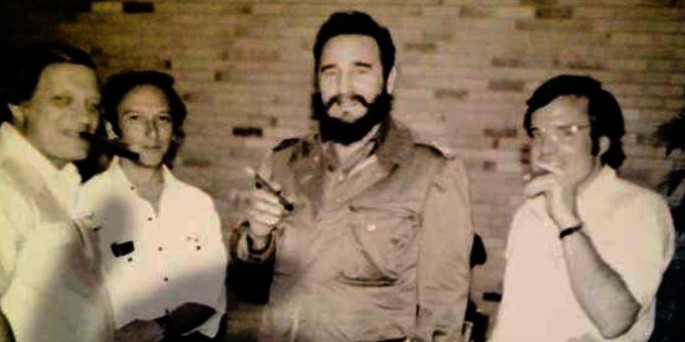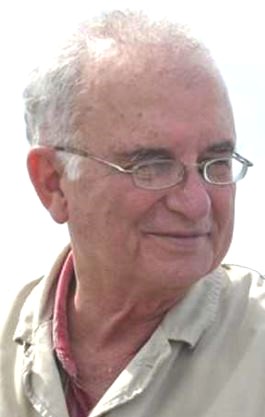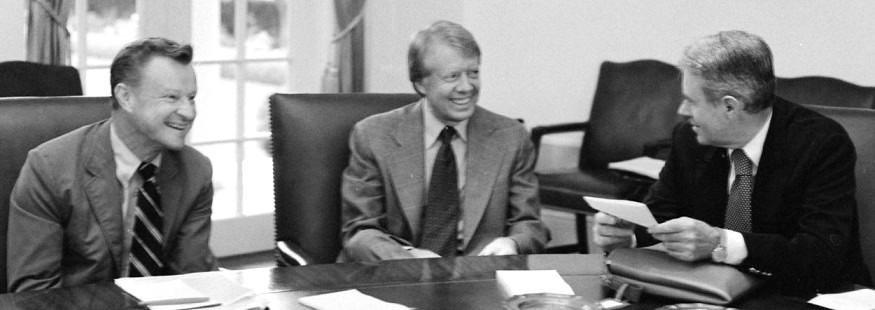US-Cuba: The Challenge Posed by a New Relationship
By Blanche Petrich (Progreso Weekly)

HAVANA TIMES — During the five decades of confrontation between the United States and Cuba, there were periods of top-secret contacts and meetings, periods ruled by an absolute freeze, and times when the threats of the hemispheric power rose and even became violent.
There were moments so critical that Gen. Alexander Haig, a notable “hawk” in the administration of President Ronald Reagan, once warned the Soviet ambassador in Washington [Anatoly F. Dobrynin] and Mexican Foreign Minister Jorge Castañeda de la Rosa that the Pentagon might decide to bomb the island.
At another juncture, Haig himself acknowledged that a dialogue with Fidel Castro was indispensable for Washington and in 1982 traveled to Mexico City to meet with Cuban Vice President Carlos Rafael Rodríguez. Pragmatism or realpolitik was assumed by both administrations. Much of that history is still untold.
Diplomat Ramón Sánchez-Parodi, who headed the Cuban Interests Section in Washington from Sept. 1, 1977 to April 30, 1989, realizes that, in the face of the new reality, with full relations established between the old rivals, “we Cubans should tell our version of history.”
And they also should raise their demands to the United States, among them the most heartfelt: the lifting of the blockade.
Former Vice Minister of Foreign Relations, member of the Council of State and founder of the Communist Party of Cuba, Sánchez-Parodi views the outlook for the historic process just beginning as a challenge greater for the government of Barack Obama than for the government of Raúl Castro.
“They are the ones who must dismantle the state of affairs they have created,” he says. “We did not blockade them or sanction them or finance their internal subversion. How can they maintain the blockade and pretend that they’re normalizing the relationship? I cannot imagine.”
BLANCHE PETRICH: They maintain that the decision does not depend on Obama but on the U.S. Congress.

SÁNCHEZ-PARODI: “Yes, it depends on the legislature. During 12 administrations they have maintained it with laws, regulations, initiatives, rules.”
What if Hillary Clinton doesn’t win the election?
SP: “Marco Rubio or Ted Cruz might win, but that doesn’t alter history. It is not a question of persons but of a world reality that’s dictating the conditions for this process.”
At the time of my interview with the author of the book “Cuba-USA: A 10-time Relationship,” the magazine Mother Jones has published details of the latest scheme leading to the reopening of the two embassies, with episodes and actors that not even Secretary of State John Kerry knew about.
[Translator’s Note: The book’s title alludes to the number of U.S. presidents who preceded Obama since the breakup in relations.]
The revelations of Peter Kornbluh and Michael LeoGrande [in their book “Back Channel to Cuba”] do not mention who were the Cuban protagonists in this delicate operation that began 18 months before the surprising unveiling of the story, on Dec. 17, 2014.
It was Sánchez-Parodi’s task to establish contact with the administrations of Richard Nixon, Jimmy Carter, Ronald Reagan and the George H. W. Bush administration in its early days.
Who took the first steps? Carter?
SP: “No, that began earlier, in June 1975. Contacts always existed, but officially we were forbidden to talk to each other. It was Henry Kissinger, under Nixon, who made the first move.

“Frank Mankiewicz and Saul Landau, progressive U.S. academics (both now deceased), conveyed to the State Department their interest in traveling to Havana. And Kissinger took advantage of this to send an unsigned letter to Fidel Castro, proposing a conversation.
“What Kissinger proposed was based on recognizing the substantive differences between the two governments while pointing out that there was no reason to maintain a perpetual hostility. The Cuban government analyzed the proposal and responded positively.
“Then came time to name representatives: me, for the Cuban side, and Secretary of State Lawrence Eagleburger. We held a first secret meeting at New York’s La Guardia Airport in January [1976.] There, we spoke only about the operative aspects. Later, in July, another meeting at the Hotel Pierre [in New York City], which lasted three or four hours.
“The central issue was the blockade. The United States did not oppose lifting it. What’s more, it was interested, but was unable to lift it because the Organization of American States had imposed collective sanctions against Cuba precisely at the urging of Washington.
“If the U.S. lifted the sanctions unilaterally, it would be contravening an O.A.S. resolution that said that no member country could maintain relations with us.
“It was a dilemma that had been discussed at the O.A.S. since 1973, without finding a solution to the trap that they themselves had set. Eagleburger told us that if the O.A.S. nations proposed a lifting of the embargo, the U.S. would not oppose it. We left the table with the idea of meeting again in two months. That never happened.
“The meeting was repeatedly postponed until, to our surprise, the dialogue broke up for the most trivial reason: Cuba’s support for Puerto Rican independence.
“Nixon fell because of the Watergate scandal and President Gerald Ford came to the White House eager to be elected in the 1976 election. To please the right, he used the pretext of Cuba’s support for the Angolan independence movement.”
Was it a pretext?
SP: “Yes, our military presence in Africa was still minimal. Ford agreed with Kissinger that the negotiation with Cuba would not be made public until after the elections, but then continued the impasse because of the Angola issue.
“However, two years later, with Cuba much more involved in the Angolans’ resistance against the UNITA guerrillas and the South African incursions, Carter ordered a resumption of the contacts.
“In 1977, [the Americans] made the negotiation official and public and proposed that the two governments open our interests sections. As facilitators, we chose Czechoslovakia and they chose Switzerland.”
Is that the usual procedure when two countries don’t have diplomatic relations?
SP: “The way we set up the arrangement — with the authority to carry out almost all the functions conducted by a normal mission, almost like an embassy without name or flag — no, it’s not usual. The idea was to be able to take the next step, full reestablishment, almost immediately. But it took 30 years to make it a reality.”
Did Carter stop it?

SP: “He was caught between two streams: the conservative one, held by his national security adviser, Zbigniew Brzezinski, and the liberal one, held by his Secretary of State, Cyrus Vance.
“Even back then, there was discussion about the issues that today are brought back to the table, for instance, mutual indemnification. They acknowledged our claim, made in the 1970s, and we acknowledged theirs. It was up to me to convey to them our position. The problem lies in the amounts.”
Sánchez-Parodi explains that the Cuban Interests Section offered to indemnify private owners whose goods and capital were expropriated by the revolutionary government. But Washington recommended to the owners that they shouldn’t accept but should file their claims so the authorities could collect the money. The claimants would receive tax breaks.
“As to our demand, we have made our calculations on the basis of the damages caused by the blockade, the terrorist accounts and the bank accounts that were expropriated by the United States. What’s important here is that the two governments admit their debts and speak out publicly.”
The Reagan era: Two extremes
As chief of the Cuban Section, did you maintain a dialogue with the U.S. authorities?
SP: “Always. With the Department of Defense, the CIA, the FBI, the departments of Commerce and the Treasury. Hostilities increased under Ronald Reagan but it was always evident that [the Americans] didn’t want to give up a direct communication with us. They never wanted to eliminate the mechanism of interest sections. We continued to negotiate the memorandum of understanding.”
It is surprising that Sánchez-Parodi stresses this continuous line of discreet contacts between Cuba and Washington at a time when antagonism was brutal, worldwide. Those were the years of U.S. military intervention in Nicaragua and El Salvador under the excuse of Soviet and Cuban interference, the years of the invasion of Grenada and the assassination of its prime minister, Maurice Bishop.

“True,” says the Cuban diplomat, who later became vice minister of Foreign Relations and ambassador to Brazil, “but they were also the years of the South African accords, perhaps the last relevant act of Reagan’s diplomacy in December 1988.
“Cuba was present in Angola from 1975 to 1989 and Washington understood that a dialogue with us was indispensable. Its support for the genocidal forces of UNITA’s Jonas Savimbi and the apartheid regime in South Africa had alienated [the U.S.] from the other African nations and the socialist camp and gave it a very bad image worldwide.
“Very little is said of the South African accords, yet they wouldn’t have been possible without Cuba. What would have happened there? Today, there is stability in Angola, Namibia is independent, and South Africa has no apartheid.”
During each U.S. administration, there were highs and lows in the confidential communication with Cuba. Sánchez-Parodi recalls the time when Mexico, Colombia and Venezuela asked Bush Sr. to take executive action to lift the blockade. That proposal foundered after the 1992 elections.
Bill Clinton signed the Torricelli and Helms-Burton laws that tightened the political and commercial siege of the island, just when Cuba’s allies in the socialist bloc collapsed.
That was also the era of the terrorist provocations, the illegal overflights by the anti-Castro group Brothers to the Rescue, and the downing of two of their planes.
Unlike the advances and retreats of the past, the thaw today cannot be reversed, Sánchez-Parodi believes. And this time it is up to the two sides. We all have to change a mental attitude that conditioned us for half a century.






It is they that proclaim the system to be “socialismo”. The state operates the economy via state controlled corporate entities. These corporations are now being held accountable to be profitable. So I could agree with you that functionally, it is state capitalism. I also agree that the state is now authoritarian versus the totalitarian system that it previously ran. House and car ownership since 2011 are representative of the change. The 200 individual self employeed occupations are reflective of change. The acceptance of some level of inequality is also part of the update to the economic model.
–
On dominance of U.S. for prevalence of free market system, I don’t buy your thesis. Private markets exist because for all their faults they are a superior form of organizing the productive capacity of a nation in many cases. For some things, state control works better. The key is finding the right balance.
–
What does not work is the Soviet central plan model, what ever it is called. It died for good reason.
Sorry, Cuba is state capitalist .
It may have a socialist STYLE means of distributing the surplus from its state capitalist enterprises but it is capitalist, meaning UNDEMOCRATIC in its hierarchical structure.
Because of that socialist style distribution Cuba is more authoritarian than totalitarian IMO.
N.J,
The U.S. maintains over 800 military bases in over 100 countries .It is a threat to any country seeking to break from free-enterprise capitalism as it has been for 100 years.
That the embargo is still on speaks to its perceived effectiveness by ten or so presidential administrations in creating the poverty they hoped would overturn the Cuban revolution from within.
Anyone swallowing the above from Gomezz suffers from mental delusions.
Was just reading a bio on Saul Landau, interesting how he tried to show his movie in the US years ago and the venues were bombed or burned down. I don’t know about anyone else but in my eyes that was blatant terrorism! I was once told that if you figure out how to fix the Northern Ireland / Irish Republic mess and the Israeli and Palestine dilemma you’d achieve worldly acclaim. Well Ireland
is on the road, Israel and Palestine off the charts disaster but I’d put Cuba right on the top. Brilliant people on both sides, politically powerful and the chess game is just beginning. Get that balanced with both sides of the straits happy and I’ll die in Paradise!
Cuba has used the embargo to it’s advantage. It’s repressive policies are based on needs of the state to protect itself, never mind the U.S. long ago gave up such aims. Cuba has moved from totalitarian communism to authoritarian socialismo. Progress.
1) The USA was breaking the embargo on weapons to South Africa’s Apartheid Regime and sending advanced artillery systems right from a farm on the USA/Canada border to Eric Gairy’s Grenada and from there to SA. Was there Canadian complicity? Likely, the USA has enough admirers in the Canadian Intelligence Community.
2) The International Sanctions did nothing to weaken SA’s military, economy or Regime ’cause they were being supplied by Israel and had money to spare from it’s many precious assets.
3) Any shortages caused by these toothless sanctions were passed on to the Black and Brown population.
4) Proof of the ineffectiveness of these Sanctions you are trying to glorify to rest importance from the absolute reality of Cuban Total Solution to the problem (Cut the Head of the Snake) is that the SA Regime was supplying Unita in Angola for a over a decade while fighting an insurrection in Namibia and another one inside its own borders and still had the wherewithal for the ill-fated 1988-89 invasion of Angola that proved their undoing. The Apartheid Regime was brought down by Cuban and Angolan Arms, end of story!
5) I call a Spade a Spade and a Blockade, a Blockade because the Only Countries that vote consistently for its continuation are the USA, Israel and a small, Pacific Island in the pocket of Uncle Sam; the whole rest of the UN’s Member Countries vote to bring it down although from time to time a tiny handful will abstain under pressure from the USA. Embargo suggests there is international support and participation for it when there is none.
6) As usual, it’s been great to disprove you again, have a real nice day!
Obviously the perspective of the Castro family regime. The claim that Cuba was responsible for the end of Apartheid in South Africa is somewhat ridiculous as is the repetitive use of the word ‘blockade’ to describe the embargo. Bruno Rodriguez correctly uses the word embargo. The end of Apartheid in South Africa owes much to the trade sanctions increasingly applied internationally. From a Canadian perspective, Brian Mulroney as PM succeeded after persistent endeavors in persuading initially the Commonwealth and even eventually Ronald Reagan and Margaret Thatcher to support the sanctions. Hence the recognition of Canada by Nelson Mandela following his release.
The good thing about the South African saga was that most of the political world endeavored to contribute to the downfall of Apartheid.
“They are the ones who must dismantle the state of affairs they have created,” he says. “We did not blockade them or sanction them or finance their internal subversion. How can they maintain the blockade and pretend that they’re normalizing the relationship? I cannot imagine.”
A succinct and accurate description of the ridiculous U.S.G. position that Cuba must make internal changes to their government and economic structures in order to normalize relations between the two countries .
Will the USG democratize its totalitarian free-enterprise capitalism or its oligarchic
( an unelected dictatorship of money) electoral system as Cuba could just as easily demand ?
Of course not. You can’t tell a deranged 500 lb. gorilla to do what is right .
It was the U.S. and not Cuba that broke from normal relations because the U.S. has never accepted or allowed economic forms other than free-enterprise capitalism since 1918 resulting in more than 70 interventions since that time to prevent the rise of democratic economic systems.
Normalization rests entirely upon the Empire respecting Cuba’s sovereignty and backing off on its historical imperial tactics.
they want to be “close to the villain” cause the resources are scarce, were these other times and conditions and the comunists in cuba would not care about relations with the US (as the second in command raul castro, used to say)